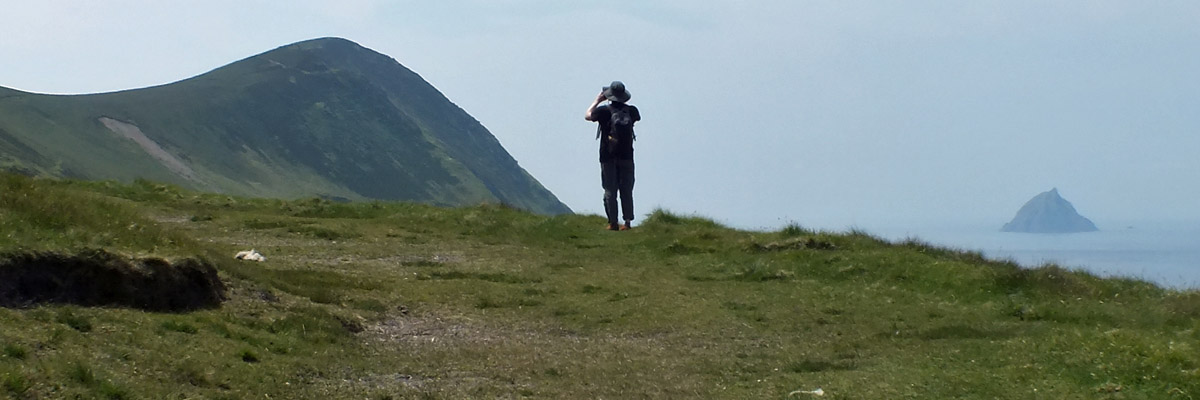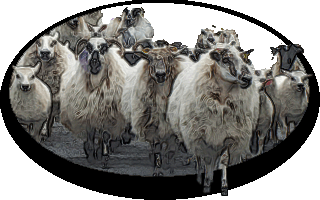|
Wednesday 7 June 2023--To Dunquin Pier we go again, walking down the steep twisting footpath to the pier itself. Apparently confused tourists--the same ones, perhaps, who think Tearaght is Skellig Michael--attempt to drive down now and then. I suppose it's not much narrower than some of the country lanes around. The bends near the bottom, however, are unforgiving.
A dinghy takes us to our transport, a boat that is itself none too large. It's about two and a half miles across to the Great Blasket. The walk up from the landing is on uneven rock, not easy for those unsure of foot.
The population of the Great Blasket was never much more than 150. There was a sharp dip following the Famine--I believe emigration started in earnest around then. Nevertheless, the population rebounded, reaching 160 in 1911. Serious depopulation followed WWI. By 1951, only 27 were left. The final blow was the illness and death of a young man during bad weather, when no doctor could reach the island. The residents were evacuated in November of 1953, all but one family who held out until the following year--1954, the year of my birth. Odd to think of the abandonment coinciding with my lifetime. The ruined village inevitably reminds me of Clearance villages I've visited in Scotland, emptied more than a century earlier. The tenant farmers there seemed to prefer steep bowls with good drainage, and the eastern face of the Great Blasket here is a beauty. I'm also reminded of St Kilda in Scotland, evacuated a couple decades before the Blasket. I've come to accept that I will not likely ever visit St Kilda, and am thinking this is the closest I will ever have to that experience.
While there have been no permanent residents here for almost seventy years, there are five cottages available for rent in summer, nicely furnished, if the photos I've seen can be trusted; otherwise very rustic, without electricity. It's possible to pick up a cell signal from the mainland, but there's no way to charge your phone. There's also a hostel and a café. A caretaker couple live on the island for the season. It's a highly coveted position; there were more than 100,000 applicants this past year. The winners were a couple from London--she originally from Cork--who took sabbaticals from their jobs. Self-sufficiency and handyman skills are no doubt indispensible attributes.
Bobby and I sit at the café, at the top of the village, while Ron goes down to the beach. After a while, I walk up the trail above and meet Ron at the shoulder of the bowl, from where we can look down the length of the island. The Great Blasket is shaped like an eel, about four miles long; we can see down to a peak about halfway along. I wish I had come here when I was fit enough to follow the trail to the other end.
We allowed for a three-hour stay, and it's just enough. We make our way down to the landing, then back to Dunquin and on to Dingle, having experienced just the slightest bit of the magic of the Great Blasket. Were I a younger man, I'd promise to return. It's an impulse I've always felt about places I enjoyed visiting, unlike some who are happy to tick their boxes and move on. I'm young enough still to be able to revisit some favorite places, but old enough to know that I'm visiting some for the last time, and have already done so for many others. I can't help but think about Mike Carney, how difficult it must have been for him at 92 to visit the Great Blasket one last time, how much more so to leave.
Next |




















































